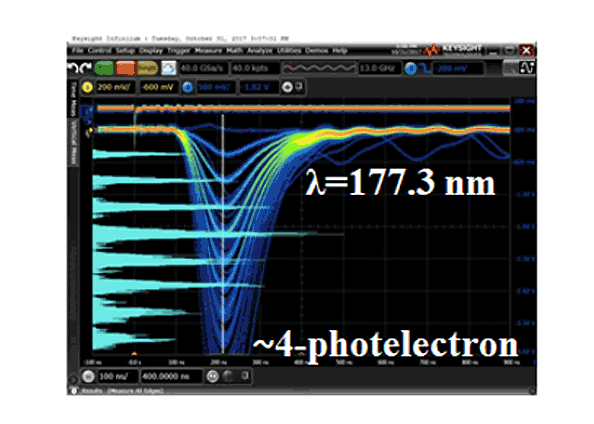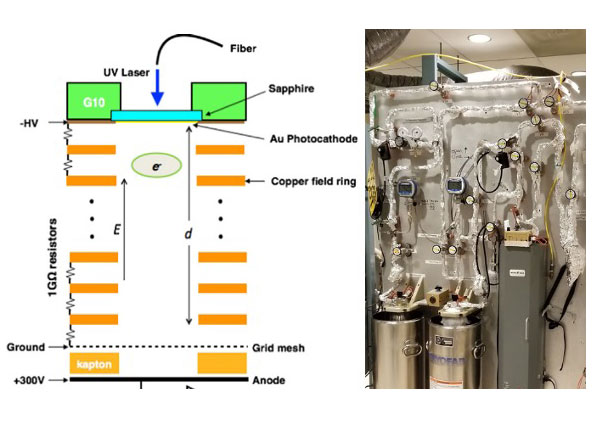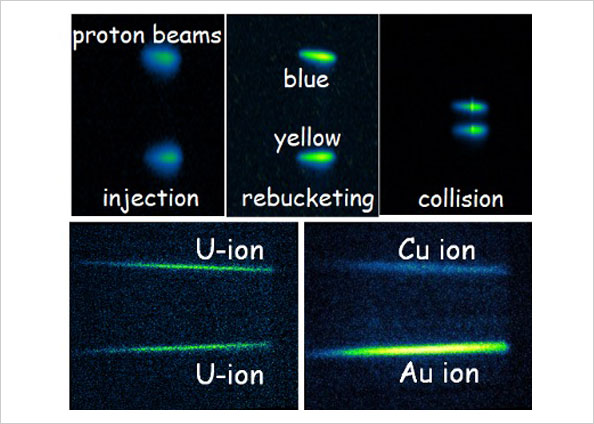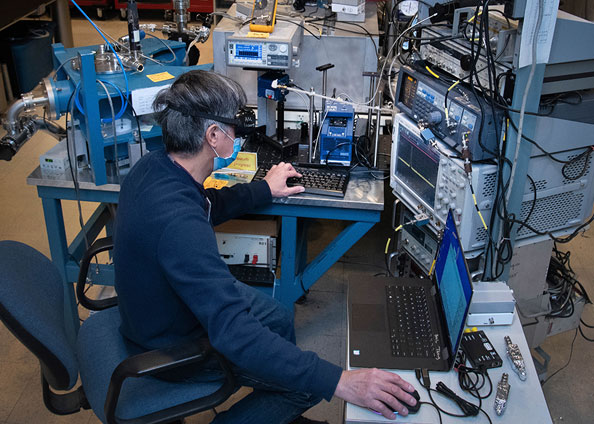System Development
Laser System Development
The Instrumentation Division’s Laser Application Laboratory features cutting-edge laser systems with a range of wavelengths (infrared to vacuum ultraviolet), pulse durations (femtosecond to microsecond), pulse energies (nanojoule to nearly one joule), and operational modes (single photons to multiphotons per pulse). These systems are routinely used for large-scale particle physics experiments.
Our Capabilities
- Development of high-resolution photoelectron sources for photoinjectors and noble liquid detectors
- Development and calibration of novel photodetectors via an ultrahigh-purity gas purification and recirculation system that liquefies noble gases
- Diagnosis of ultrafast optical events
Case Studies
Laser-triggered PE Source

Noble-liquid time-projection chambers are now the preferred detectors for accelerator-based neutrino and dark matter experiments seeking to advance our understanding of the universe. We developed a laser-triggered photoelectron source with excellent trigger stability and precise timing synchronization to study the transport properties of electrons in noble liquids. Ultimately, these studies will help optimize the spatial resolution of current and future charged-particle detectors, including the Deep Underground Neutrino Experiment (DUNE), MicroBooNE, ArgoNeuT, DarkSide, and the next Enriched Xenon Observatory (nEXO)
Compact VUV Generation

An electron drift stack (left) and noble gas purification system.
Scintillation detectors sensitive to vacuum ultraviolet (VUV) light from liquified noble gases are extensively employed in many fields, such as particle physics, nuclear physics, and medical science. Typically, VUV sources and generation methods require expensive laboratory-scale equipment. We devised a compact ultrafast laser–based VUV generation scheme for the calibration of state-of-the-art silicon photomultipliers, black-silicon photodiodes, black-silicon photomultipliers, and other novel photodetectors under development for key neutrino experiments, including DUNE, DarkSide, and nEXO.
Gas Fluorescence BPM

Beam profile monitor images.
We developed a beam profile monitor based on residual gas fluorescence for enhanced signals. This monitor provides real-time guidance on beam injections, tuning parameters, and experimental physics runs, and takes independent measurements of beam size and emittance at Brookhaven’s Relativistic Heavy Ion Collider and accelerators around the world, including CERN in Switzerland and GSI in Germany.





